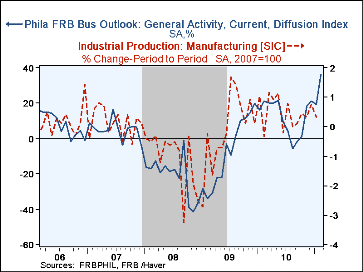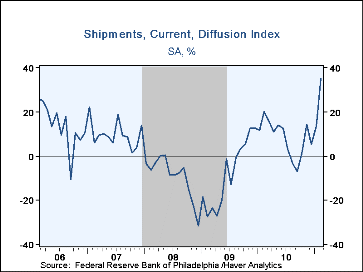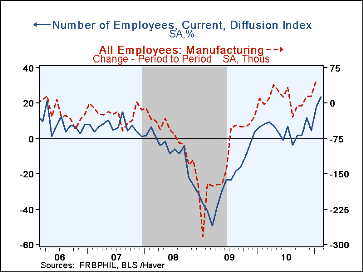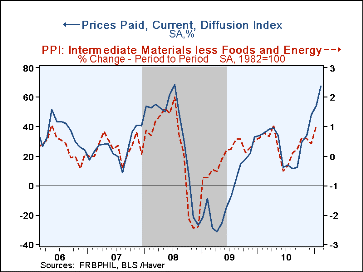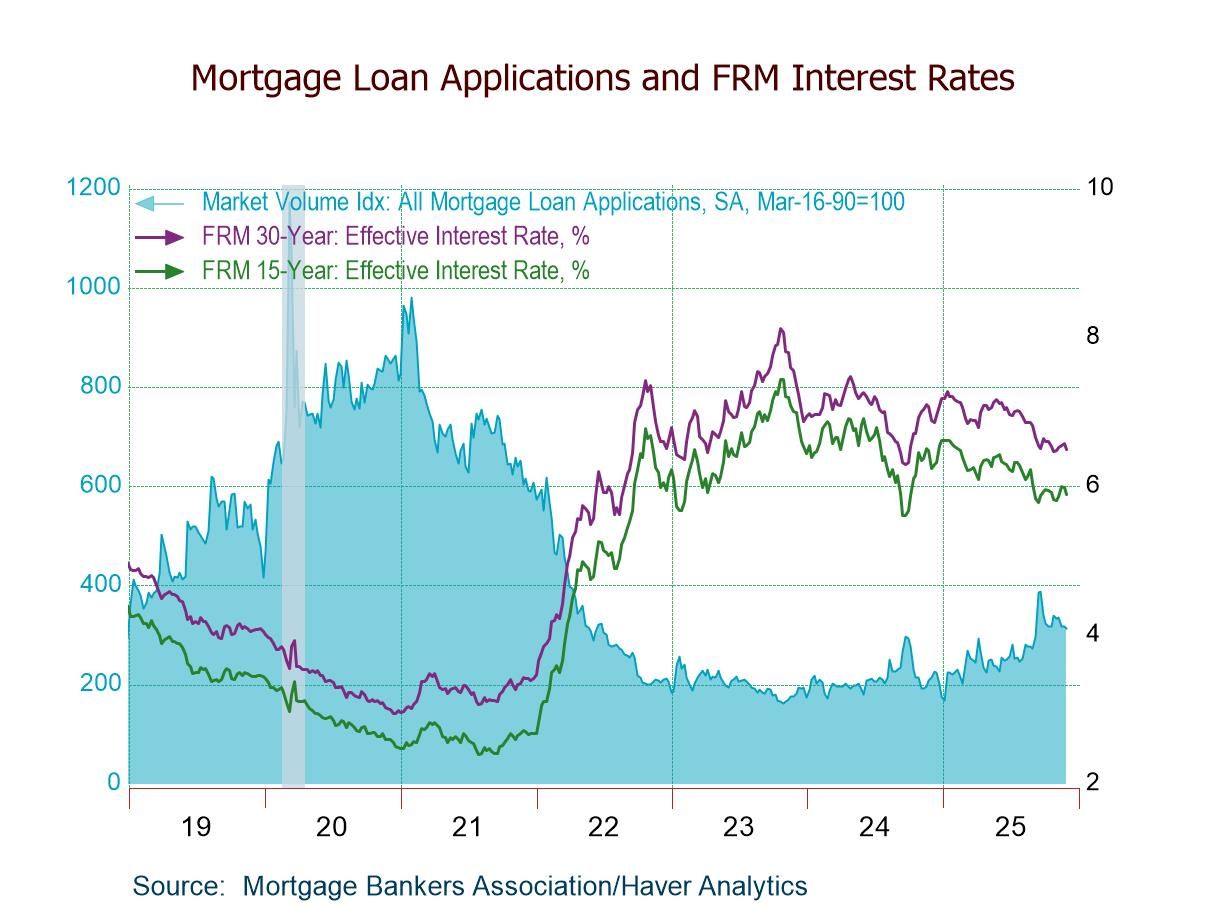 Global| Feb 22 2011
Global| Feb 22 2011Philadelphia Fed Index Reaches Highest Since 2004
by:Tom Moeller
|in:Economy in Brief
Summary
The factory sector's recovery built stronger legs this month, according to the Philadelphia Federal Reserve Bank's index of regional factory sector activity. The figure rose to 35.9 from an unrevised 19.3 in January and it was the [...]
The factory sector's recovery built stronger legs this month, according to the Philadelphia Federal Reserve Bank's index of regional factory sector activity. The figure rose to 35.9 from an unrevised 19.3 in January and it was the highest level since January 2004. It beat Consensus expectations for 20.8. During the last ten years, there has been an 76% correlation between the level of the Philadelphia Fed Business Conditions Index and the three-month growth in factory sector industrial production. There has been a 78% correlation with q/q growth in real GDP.
There was widespread improvement amongst the index components. The shipments series jumped more than 20 points, also to its highest level since 2004. New orders, unfilled orders and delivery times were similarly strong. Finally, the employment figure surged to its highest since April 1973. During the last ten years, there has been an 88% correlation between the index level and the monthly change in manufacturing sector payrolls.
The prices paid index also improved sharply this month to its highest level since July 2008. Sixty-seven percent of firms paid higher prices while, again, none paid lower. During the last ten years there has been a 70% correlation between the prices paid index and the three-month growth in the intermediate goods PPI. There has been an 78% correlation with the change in core intermediate goods prices.
The separate index of expected business conditions in six months fell for the second month but remained much higher than last year. Expectations for new orders, employment and capital expenditures fell. Expectations for prices rose to its highest since 1988.
The survey panel consists of 150 manufacturing companies in Federal Reserve District III (consisting of southeastern PA, southern NJ and Delaware.) The diffusion indexes represent the percentage of respondents indicating an increase minus the percentage indicating a decrease. The figures from the Philadelphia Federal Reserve can be found in Haver's SURVEYS database. The Consensus expectations figure is available in Haver's MMSAMER.
Global Imbalances: Links to Economic and Financial Instability is Friday's speech by Fed Chairman Ben S. Bernanke and it can be found here.
| Philadelphia Fed (%) | Feb. | Jan. | Dec. | Feb. '10 | 2010 | 2009 | 2008 |
|---|---|---|---|---|---|---|---|
| General Activity Index | 35.9 | 19.3 | 20.8 | 21.1 | 12.1 | -7.7 | -21.5 |
| New Orders | 23.7 | 23.6 | 10.6 | 22.3 | 5.4 | -9.8 | -14.9 |
| Shipments | 35.2 | 13.4 | 5.2 | 20.1 | 8.2 | -8.1 | -9.2 |
| Delivery Times | 10.0 | 2.3 | 7.0 | 0.5 | 0.9 | -15.3 | -10.6 |
| Number of Employees | 23.6 | 17.6 | 4.3 | 8.0 | 4.6 | -24.0 | -8.8 |
| Inventories | 2.1 | 6.8 | -5.9 | 0.8 | -5.1 | -24.1 | -16.7 |
| Prices Paid Index | 67.2 | 54.3 | 47.9 | 35.7 | 28.5 | -4.0 | 36.1 |
Tom Moeller
AuthorMore in Author Profile »Prior to joining Haver Analytics in 2000, Mr. Moeller worked as the Economist at Chancellor Capital Management from 1985 to 1999. There, he developed comprehensive economic forecasts and interpreted economic data for equity and fixed income portfolio managers. Also at Chancellor, Mr. Moeller worked as an equity analyst and was responsible for researching and rating companies in the economically sensitive automobile and housing industries for investment in Chancellor’s equity portfolio. Prior to joining Chancellor, Mr. Moeller was an Economist at Citibank from 1979 to 1984. He also analyzed pricing behavior in the metals industry for the Council on Wage and Price Stability in Washington, D.C. In 1999, Mr. Moeller received the award for most accurate forecast from the Forecasters' Club of New York. From 1990 to 1992 he was President of the New York Association for Business Economists. Mr. Moeller earned an M.B.A. in Finance from Fordham University, where he graduated in 1987. He holds a Bachelor of Arts in Economics from George Washington University.


